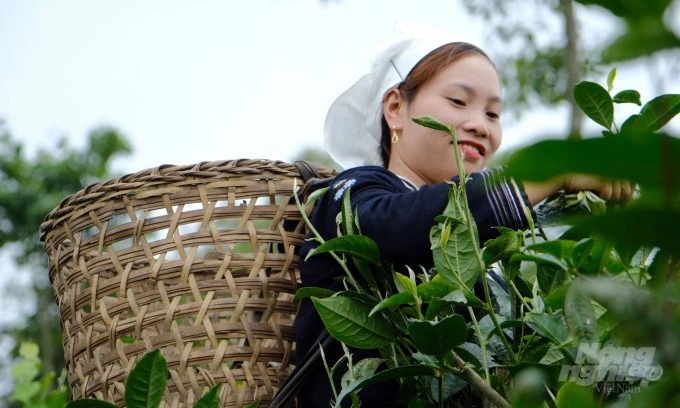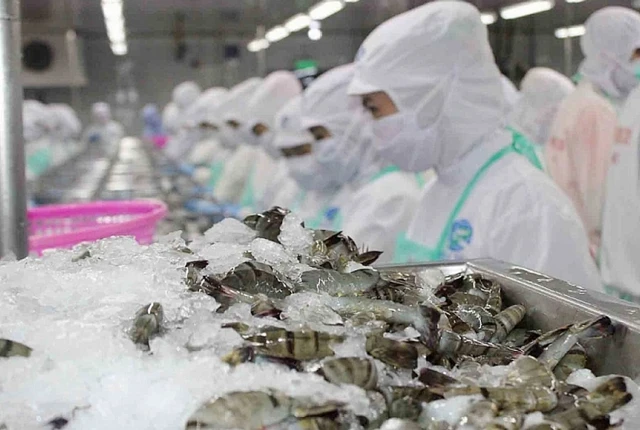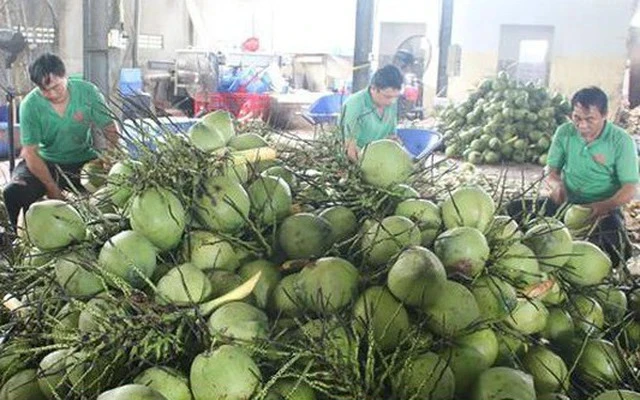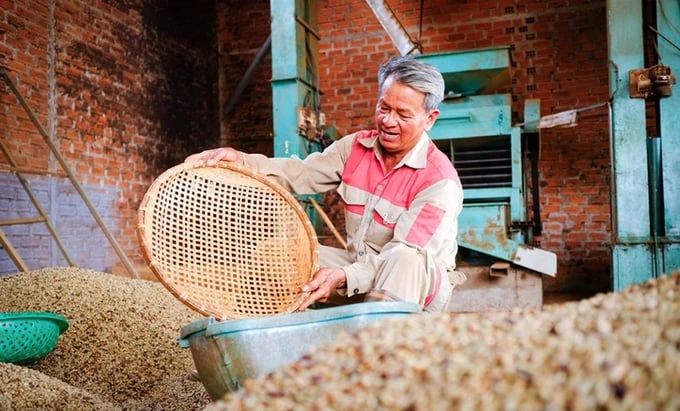(VAN) Deputy Minister of Agriculture and Rural Development Hoang Trung shared his enthusiasm with Vietnam Agriculture Newspaper about his concerns for enhancing the value of the tea industry.
According to Deputy Minister Hoang Trung, tea plays a very important role, contributing to the agricultural sector's overall growth. Tea is also a key crop that helps many localities grow economically and helps farmers have sustainable livelihoods and incomes.
In recent times, MARD has been very interested and has had many projects and policies related to tea, along with the efforts of the business community, cooperatives, and especially farmers, to build Vietnam's tea industry with many encouraging achievements.
With an area of approximately 130,000 hectares in 34 provinces and cities across the country, Vietnam's annual tea output is relatively large, with nearly 1.2 million tons. Products are increasingly diverse, and quality is constantly improved to supply the domestic consumer market and contribute to the export market to more than 70 countries and territories around the world. The average export turnover of Vietnamese tea reaches more than USD 200 million/year.
However, to continue to develop Vietnam's tea industry truly effectively and sustainably, with the core value of bringing higher income to farmers, MARD has determined that it is necessary to restructure the tea industry in a more sustainable and effective direction. Of which, the Project on Developing Key Industrial Crops to 2030 identified tea as one of the six key industrial crops, with many contributions to the agriculture and rural development sectors. Therefore, all issues, from technical solutions to development orientations for each region and accompanying policies, are aimed at developing a stable and sustainable tea industry.
MARD has directed the Department of Crop Production to develop a specific plan and coordinate with tea-growing provinces based on the specific characteristics of each region to have appropriate development plans. The goal is that by 2030, the tea growing area nationwide will be stable at about 120,000–125,000 hectares. Annual tea output reaches from 1.4 to 1.5 million tons.
Parallel to that are solutions to synchronously apply new scientific and technical advances such as planting shade trees, water-saving irrigation, mechanizing the cutting and harvesting of tea buds, correct use of pesticides, etc. The goal is that by 2030, the area of tea applying GAP and equivalent production processes will reach more than 70%, and over 70% of the area will be granted planting area codes.
With old and stunted tea areas, it is necessary to replant with new high-yield and high-quality tea varieties; 100% of newly planted tea areas use standard varieties. In places with conditions, such as Thai Nguyen, Ha Giang, Yen Bai, Son La, Phu Tho, Nghe An, and Lam Dong, it is essential to combine the development of tea-growing areas with the development of culture, tourism, and services.
According to Deputy Minister Hoang Trung, to achieve the above-mentioned goal, it is first necessary to stabilize the tea growing area. Build a set of high-quality varieties and a variety structure suitable for each locality and each ecological region of tea growing to ensure that Vietnam has raw material areas that meet processing needs, market standards, and are suitable for increasingly diverse consumer tastes.
Currently, Vietnam has about 260 factories and facilities processing different types of tea, so the problem is to have enough raw materials for processing, create the most diverse products, and bring the highest value for the tea industry. It is necessary to continue to encourage businesses to invest more in tea processing technology and better grasp consumer tastes and market requirements, especially foreign markets, to have methodical product development orientations.
Second, a very important issue is that the tea industry needs to have a development strategy and orientation to further diversify export markets. MARD and its subordinate units will coordinate with the Vietnam Tea Association to search for new markets. At the same time, organize production and processing really methodically and fundamentally to ensure product quality, especially food safety and hygiene and pesticide residue issues to meet each market's standards.
Lessons learned in recent times show that violation notices related to exported tea shipments are mainly issues of food safety and hygiene, pesticide residues, etc. Therefore, in parallel with the production organization plan, the monitoring programs related to food safety and hygiene and pesticide residues must be paid special attention.
Third, focus on research and processing to diversify products, diversify designs, and build brands for Vietnamese tea products. Integrate the construction of sustainable tea raw material areas with the task of developing agricultural tourism, eco-tourism, and experiential tourism to both promote product quality and create a cultural space to enjoy tea.
Producing tea in an organic, ecological, and sustainable direction
According to Deputy Minister Hoang Trung, in order for Vietnam's tea industry to develop sustainably and effectively and achieve the proposed goals, MARD has also assigned subordinate agencies to research and amend regulations and procedures to suit the current conditions of the tea industry.
The greatest goal is to ensure that in a production area, productivity, output, and quality of tea reach the highest level. Gradually restructure the tea industry towards production following a circular agricultural process, using the most economical and least input materials but still achieving the highest efficiency. Build concentrated and sustainable raw material areas for tea production. Continuously innovate production processes, improve the quality of input materials to protect the production environment, ensure the ability to prevent harmful organisms on tea plants, and ensure high productivity and quality to produce tea in an organic, ecological, sustainable, and circular direction.
To achieve this goal, the issue of raising awareness and capacity of tea growers on the use of safe input materials requires the attention of localities in strictly managing input materials and ensuring that materials used for tea production are of the right quality and type. Along with that, further promote market opening and seek to diversify export markets. This must be determined as a regular and continuous job and task to ensure the linkage chain of the tea industry from planning production organization, production plans, and production processes to harvesting and processing to build a truly sustainable and effective market.
In parallel with building raw material areas, it is necessary to further promote processing, product diversification, and market diversification. MARD, together with localities, the Vietnam Tea Association, the business community, cooperatives, and farmers, will research the market, handle technical barriers, and remove related bottlenecks in order to increase the quality and image of Vietnamese tea.








